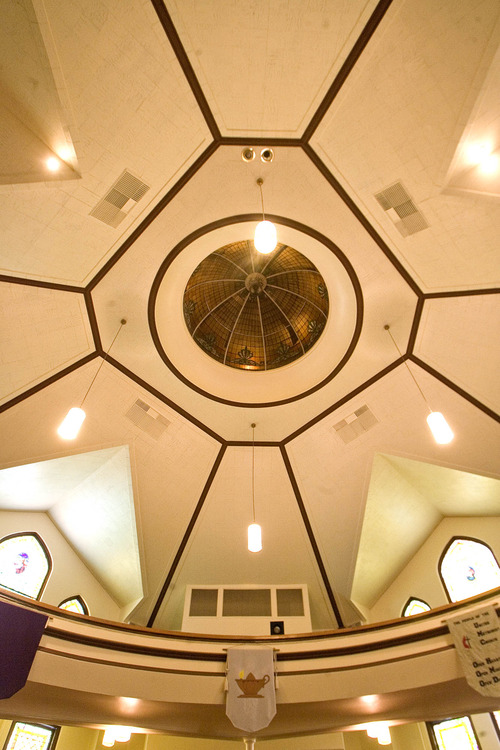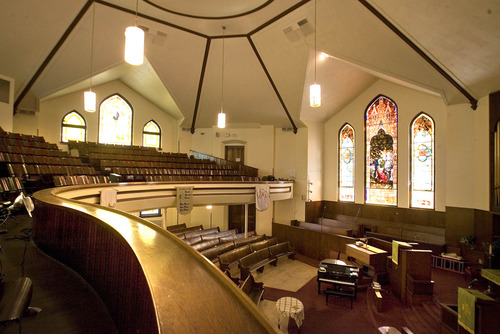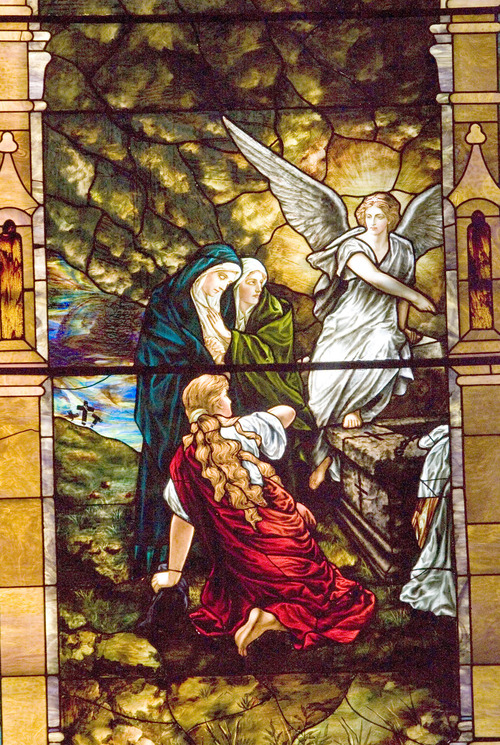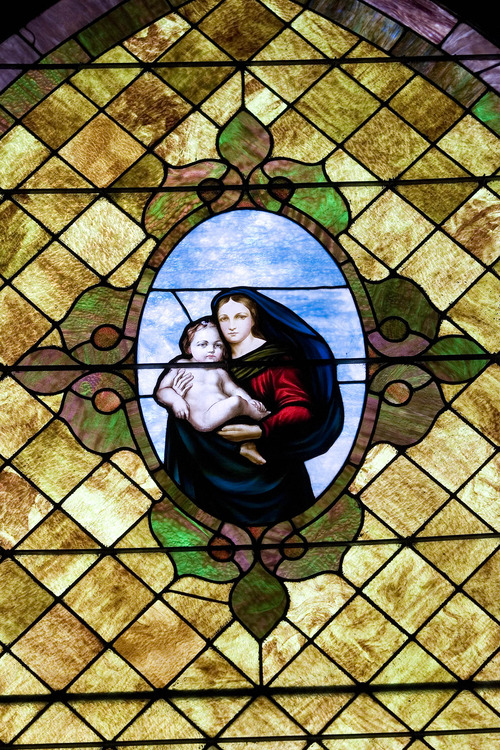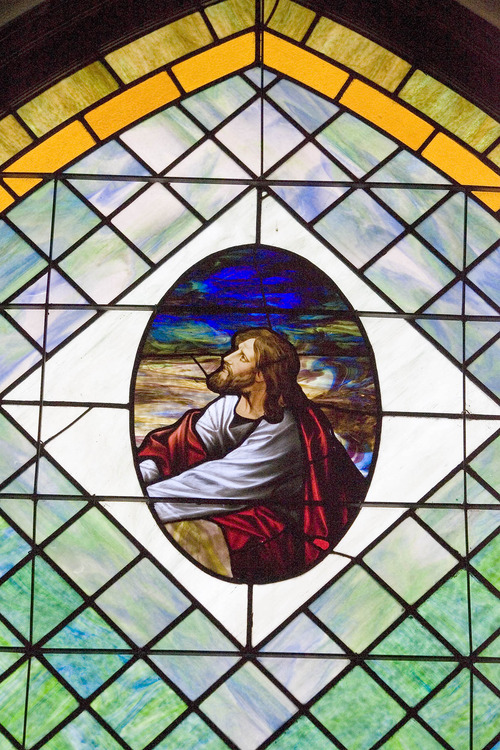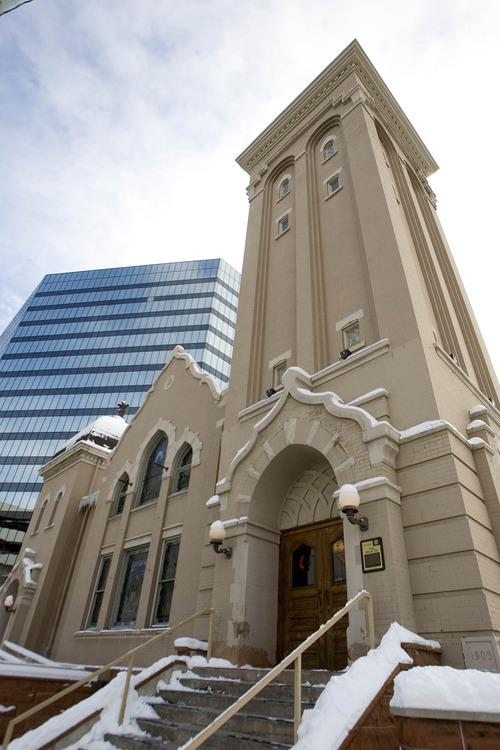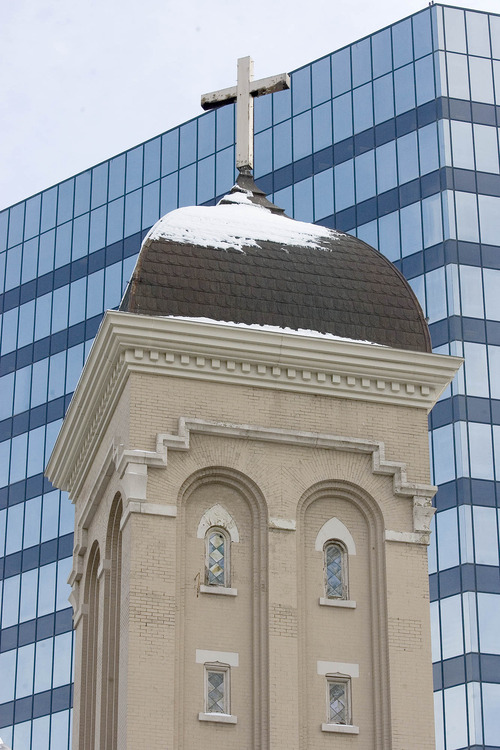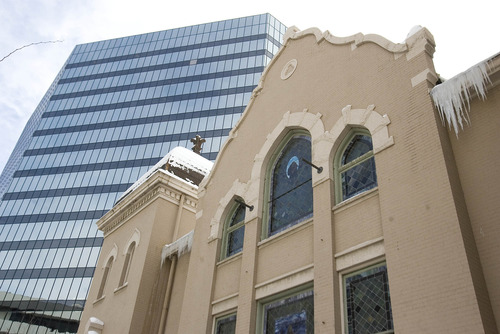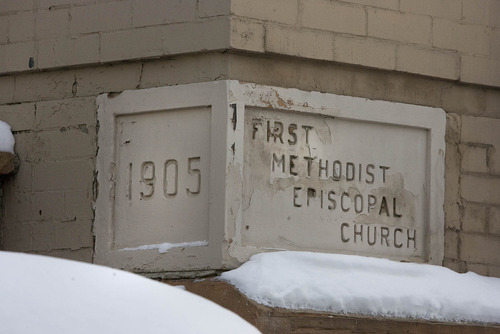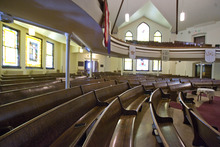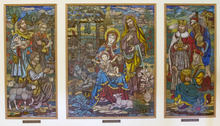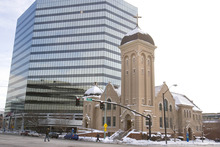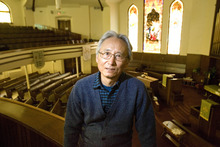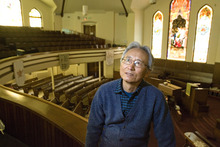This is an archived article that was published on sltrib.com in 2013, and information in the article may be outdated. It is provided only for personal research purposes and may not be reprinted.
When it was completed in 1906, the sandstone Methodist church on the downtown Salt Lake City corner where 200 East meets 200 South became a visible emblem of religious diversity in a Mormon-dominated city.
Just blocks from LDS Temple Square, the Methodist showpiece was designed by prominent Utah architect Frederick Albert Hale — who also created the prestigious Alta Club a couple of blocks north — to accentuate the then-popular Victorian Eclectic style. With its pointed-arch windows, curlicue gables and a slightly exotic, modified mansard roof, the church stood out.
But the sky-high tower, topped with a cross, was an especially potent symbol.
Placing the tower with an entry beneath it on a corner — quite common in turn-of-the-century churches — was done for a spiritual purpose: It marked a clear delineation between secular and sacred spaces, between the outside world and the inner spirit.
With its elongated vertical windows, First United Methodist's tower represents "a joining of heaven and Earth," says Utah architectural historian Paul Anderson. "It also connects the church to the city."
More than 100 years after the church towered above its neighbors, it is dwarfed by a giant blue glass high-rise, surrounded by telephone and electrical wires, and somewhat hidden among bike shops, bars and restaurants. Though fewer in numbers now than in the past, church members continue to feel pride in their historic building.
The sanctuary has retained its soft, intimate feel, with dark brown walls, dark-stained pews, dark wood altar and burgundy carpet. The domed ceiling draws the eyes upward to heaven.
Stained-glass images tell the story of a humble, less-triumphant brand of Christianity. The main window is not of Jesus, but of the women who went to his tomb and were told by an angel that he was not there.
Likewise, the images of Jesus that adorn the north and west windows are not of Christ the King (though there is a lone crown in one panel), but of Jesus holding a lamb, Jesus knocking at the door, Jesus praying in the garden.
And a mosaic triptych, added in 1962, also features more humble believers. Called "The Incarnation," the three panels separately depict shepherds, wise men and the Holy Family — Mary, Joseph, Baby Jesus.
"The image of Christ depicted in our stained glass is gentle, welcoming and inviting. That is certainly the kind of gospel we strive to practice in our congregation: God of grace and unconditional love," explains the Rev. Eun-Sang Lee, the church's soft-spoken pastor. "I don't think that representation of the divine is unique to our windows, though. The windows of First Presbyterian [Church of Salt Lake City] have the same kind of images, for example. That was rather common to Protestant church buildings built in that era."
At least one aspect of First United is increasingly rare: the pews form a kind of semicircle, with a balcony above. Every seat boasts a clear view of the altar, adorned with a dove, and the pulpit, where the pastor delivers his sermon.
This arrangement is known as auditorium-style seating — reportedly the only one of its kind remaining in Utah — and allows the congregation to have a more "interactive experience," Lee says. "It's soft and non-hierarchical. I like it that way."
The design signals that "this is a preaching church, where you try to get as many of the congregation as you can close to the pulpit," says Anderson, a curator at Brigham Young University's Museum of Art, "rather than a more liturgical church, where you need a central aisle for the processional."
Among First Methodist's architectural treasures is an elaborate pipe organ, original to the 1906 building and believed to be the oldest in Utah, Nevada and Idaho, according to church historian Mike Green. It also is said to have "more of its original components than any other [historic] organ" in the region.
Through the years, prominent Utah organists have performed at First Methodist, including the late Alexander Schreiner, the legendary Mormon Tabernacle organist who played it in 1917 while a senior in high school.
The church has launched a $350,000 fundraising campaign to restore the organ and the rest of the building, which is listed on the National Register of Historic Places under its original name, First Methodist Episcopal Church. It became part of the United Methodist Church at that denomination's founding in 1968.
Maybe someone will step forward to help pick up the financial slack — as retail giant J.C. Penney did back in the day.
In 1909, Penney moved his corporate headquarters from Kemmerer, Wyo., to Salt Lake City, and he and his wife, Berta, attended First Methodist, which cost $45,000 to build.
Berta Penney died of pneumonia in 1910, Green says, and Penney sought counsel and comfort from then-Pastor Francis Short. The two became so close that they traveled to the Holy Land together. In 1912, Penney paid off the church's mortgage, erecting a plaque there in honor of his wife. That same year, the department-store magnate moved his corporate headquarters to New York and persuaded Short to relocate there as well to become the company's education supervisor.
Today, First United Methodist has about 200 members of its own, while a tiny Methodist Korean group has services in the church each week and a Park City Anglican congregation does the same once a month.
The painted yellow church remains a symbol of religious heterogeneity in the city, attracting doctors, lawyers and business professional from Sugar House and the Avenues, university students and immigrants from the Pacific Islands, Asia, Africa, Central and South America as well as many poor and homeless people in and around downtown.
"Our people cherish the diversity," Lee says, and embrace the challenge of restoring "this old building."
About the 'Where We Worship' series
Utah boasts mighty cathedrals and quaint meetinghouses, aging synagogues and modern mosques. All built on foundations of faith, they are the places Utahns go to pray and to ponder, to lift and to be lifted, to connect with the devout and with the divine. Once a month throughout the year, The Salt Lake Tribune will feature one these sacred spaces, one of these places "where we worship."
Today • Salt Lake City's First United Methodist Church. —
About First United Methodist
Location • 203 E. 200 South, Salt Lake City
Year built • 1906
Cost • $45,000
Architect • Frederick Albert Hale
Style • Victorian eclectic
Features • pipe organ, stained glass, mosaic triptych, auditorium-style seating, domed-roof, modified Gothic windows




